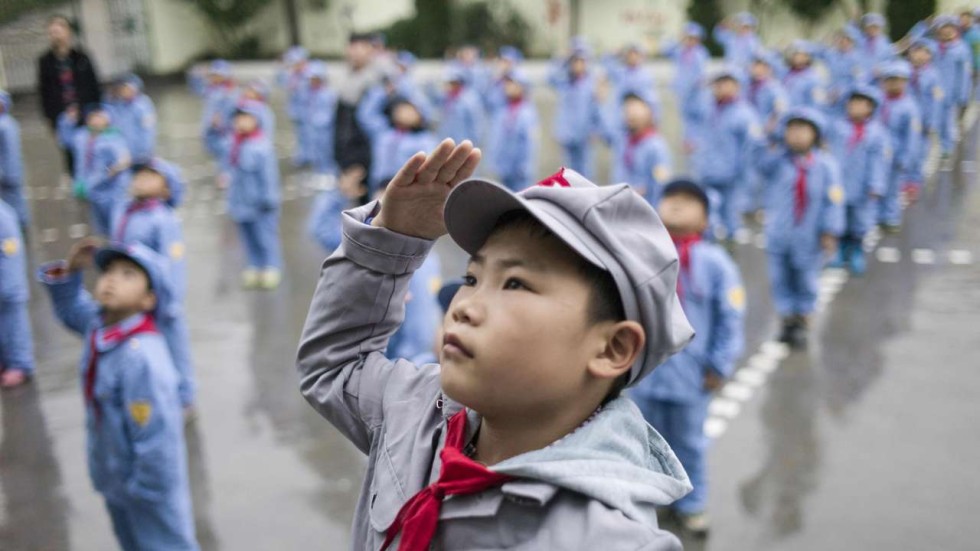Revealed: life inside China’s ‘Red Army’ schools
Patriotic songs and lessons on the nation’s revolutionary past on the curriculum at more than 200 of the schools across the country
PUBLISHED : Monday, 13 February, 2017, 12:02pm
UPDATED : Monday, 13 February, 2017, 11:04pm
Comments: 11

Agence France-Presse
Dressed in powder blue and grey military uniforms, red neckerchiefs and caps emblazoned with crimson stars, young Chinese pupils in the southwestern province of Guizhou perform kung fu exercises in their courtyard to stave off the winter cold.
Their small school, Yang Dezhi, is situated in the rural hills of Wenshui town and was established more than a hundred years ago during the final years of the Qing dynasty.
But it has undergone a more recent overhaul.
In 2008, it was designated a “Red Army primary school” - funded by China’s “red nobility” of revolution-era Communist commanders and their families - one of many such institutions that have been established across the country.
Why are so many Chinese nostalgic for the Cultural Revolution?
The schools are an extreme example of the “patriotic education” which China’s ruling Communist party promotes to boost its legitimacy, but which critics condemn as little more than brainwashing.
“The Red Army spirit is a real asset for children. It teaches them to be hardworking and thrifty from a young age,” said school manager Mu Chunyong, who oversees the 136 pupils in first to fourth grades.
Guizhou province is one of China’s poorest, but even there, most families are now able to afford relatively comfortable lives, making it important to remind students of the hardships of the past, he said.
“If you don’t instil kids these days with a sense of the evolution of history, the kids won’t cherish their current living conditions.”
There were more than 200 red army schools as of last year.
Sometimes bearing names of prominent Communist Party elders, they are built in “old revolutionary areas”, once cradles of Communist rebellion often among the country’s poorest areas.
In the 1930s, Yang Dezhi sheltered Red Army soldiers during their epic Long March through remote and hazardous terrain as they fled rival Nationalist forces.
The nearest city, Zunyi, was where China’s founding father Mao Zedong first consolidated his power over the ruling Communist party.
Yang Dezhi’s Red Army school credentials came with increased funding, which it used to increase teacher salaries and buy backpacks, clothing and water mugs for the children, among other things.
A “red culture” class was added to the curriculum, in which children learn to sing nationalistic songs with military precision, discuss stories about the early days of the Communist Party and study local Red Army history.
Like all buildings in China’s south, the school has no central heating.
Instead, children take breaks every hour or so to perform guided exercises in the courtyard to get their blood pumping.
Every afternoon, they spend five minutes using their fingertips to massage the area around their eyes to relax before the last round of classes - a practice taught in all Chinese schools.
At lunch, they line up in the canteen to serve themselves one by one from trays of rice and huge silver pots filled with potatoes, beans and chicken, before eating in silence.
Can China ever move on from Mao Zedong?
Pupils walk at most half an hour to get to school every day through roads often muddied by the region’s fine, persistent rain, stopping at small roadside shops to buy neon-hued, sugary packaged snacks.
A martial spirit can teach children “self-reliance, self-confidence, and how to strive for self-improvement”, said Mu.
This article appeared in the South China Morning Post print edition as:
Schooling children in the Red Army patriotic spirit
China’s Communist Revolution Still Alive in “Red Schools”
February 17 2017 at 7:53 PM










 Reply With Quote
Reply With Quote
Bookmarks